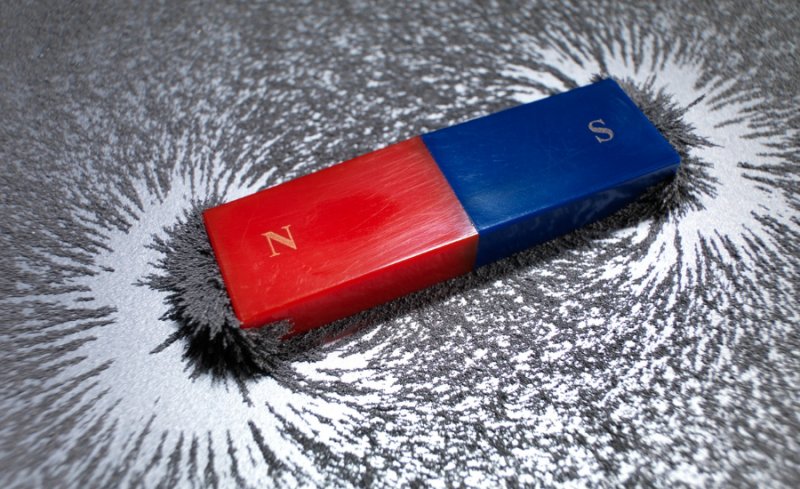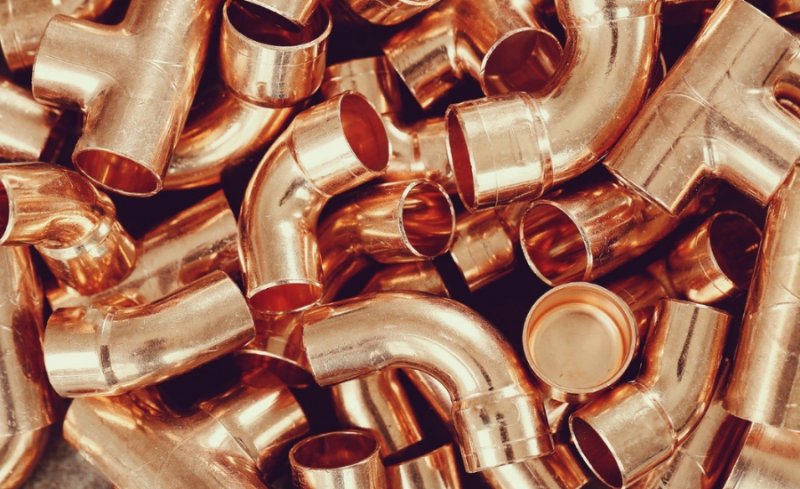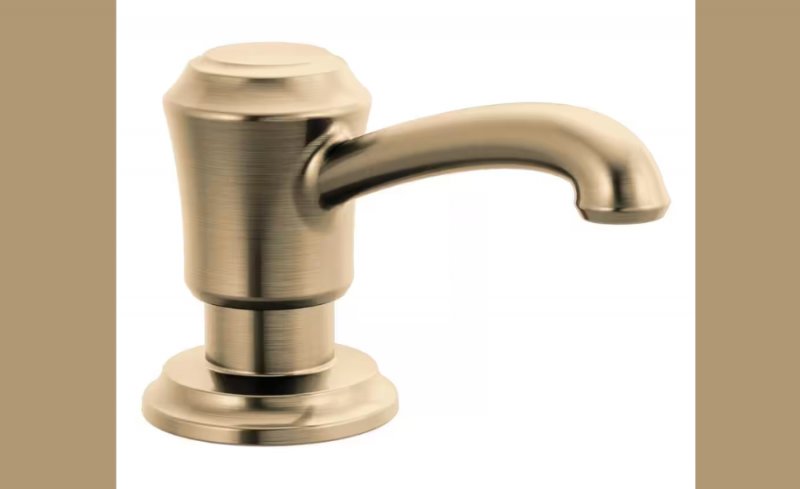Unveiling the Secrets of Bronze: A Non-Magnetic Marvel
If you’re studying various metals, one metal that plays a crucial role is bronze. It has multiple practical applications and is used in shaping various structures. However, unlike metals such as iron or cobalt, bronze does not have magnetic properties. This may lead you to wonder: is bronze magnetic?
No way. Bronze alloy is non-magnetic. A magnet won’t attract bronze, so you may test this. Despite being non-magnetic, bronze finds extensive use in different industries, as well as in furniture and various other sectors.
Now, I encourage you to continue reading until the end as I’ll provide more detailed information about the practical applications of bronze. Additionally, I’ll explain how to properly test for the magnetism of bronze. Let’s explore bronze’s wonderful universe! Continue reading to learn more.
Why isn’t Bronze Magnetic?
Bronze is not magnetic, primarily due to its composition. It consists mostly of copper, which inherently does not attract magnets. Since bronze contains around 96-97% copper, it exhibits non-magnetic properties.
Authentic bronze typically consists of 98-99% copper and 2-1% tin. Other bronzes contain copper, tin, and a third element. This third element can be iron, nickel, or zinc, which acts as a protective film, making bronze resistant to rust.

Various types of bronze serve different purposes. For example, architectural bronze contains approximately 55% copper, 40% zinc, and 3% lead. Commercial bronze is 91% copper and 10% zinc. Statuary bronze contains 97% copper and a small percentage of other metals.
Although some bronze varieties may have trace amounts of iron, the percentage is so negligible that even using a strong magnet would not make bronze magnetic. Therefore, bronze remains non-magnetic due to its dominant copper composition.
How Bronze is Tested Using Magnets?
Testing for bronze is actually quite straightforward, but there is a more professional method that ensures accurate results. Let me show you how to identify bronze. Are you ready?
Step 1: Gather several metallic shards or pieces, including copper and some alloys. Be sure to select the alloys carefully.
Step 2: Take a medium-sized magnet with moderate force and hold it above the metals you collected earlier. If needed, you can use a stronger magnet.
Step 3: Observe which metals are attracted to the magnet and which ones are not. Separate them accordingly, and you can even place them into two different boxes.

Step 4: If the metal fragment you’re testing is larger than the magnet, try this: Place the magnet near the bottom of the metal shard and hold it above the table.
Step 5: Watch closely what happens. If the magnet resists the gravitational force and attracts the shard, then you can conclude that it is not bronze.
Step 6: While performing the tests, measure the strength of the magnet required to pull the metallic objects and make notes. Also, be sure to collect samples for further analysis.
As shown, it’s quick and easy! But there’s a caveat. Bronze magnetizes? Yes, but there’s a way.
You might have heard of electromagnetism. By coiling wires around the bronze piece and passing electricity through it, you can create a temporary magnetic field. This phenomenon turns bronze into an electromagnet. You can use neodymium magnets and observe the attraction they have to the electromagnetic bronze.
I hope this clarifies the process for you! Please inquire if you need additional help.
Properties and Uses of Bronze

Bronze, an alloy consisting primarily of copper and tin, possesses a unique set of properties that have made it an indispensable material throughout history. This versatile metal has found its way into various aspects of human civilization, showcasing its exceptional qualities and adaptability in diverse applications.
Properties of Bronze:
Durability: Bronze’s durability is notable. It is ideal for outdoor statues, bells, and monuments because it resists corrosion and weathering.
Strength: Bronze exhibits impressive strength, making it an excellent choice for manufacturing tools, weapons, and heavy machinery components.
Malleability: With its exceptional malleability, bronze can be easily molded into intricate shapes, enabling artisans to create intricate sculptures and decorative elements.
Ductility: Bronze is also highly malleable, allowing it to be drawn into thin wires. This property has historically been essential for crafting items like musical instruments and jewelry.
Low Friction: Bronze possesses low friction characteristics, making it ideal for use in bearings and bushings in machinery, reducing wear and ensuring smooth operation.
Thermal Conductivity: Bronze’s ability to conduct heat efficiently makes it suitable for applications like heat exchangers and radiator cores.
Uses of Bronze:
Art and Sculpture: Sculptures, statues, and art masterpieces have traditionally been made of bronze. Its malleability lets artists capture minute details and create lasting works.
Tools and Weapons: Bronze-made axes, spears, and swords are stronger and more durable.
Musical Instruments: Bronze’s resonance makes bells, cymbals, trumpets, trombones, and saxophones.
Engineering and Machinery: Bearings, gears, and other engine elements require bronze due to its low friction and strength.
Coins and Currency: Historically, bronze was used to mint coins due to its durability and resistance to wear, contributing to the economy of ancient civilizations.
Marine Applications: Due to its resistance to corrosion in seawater, bronze has been utilized for marine hardware, ship fittings, and propellers.
Electrical Connectors: Bronze’s excellent electrical conductivity and resistance to corrosion make it a preferred choice for electrical connectors and terminals.
Decorative Hardware: Bronze hardware and architectural embellishments are popular due to their appealing appearance and weather resistance.
Bronze’s durability, strength, malleability, and low friction have made it useful in many industries and arts. Bronze has shaped our culture and technology from prehistoric times.
Bronze Magnetic Permeability
How well a material permits the magnetic flux to pass through it is referred to as magnetic permeability. Let’s now examine bronze’s magnetic permeability.
Calculating the ratio of the magnetic field intensity to the magnetizing field yields the result that bronze has a magnetic permeability that is less than one. In the case of bronze, the alloy lacks sufficient electrons for the electrons to align with the magnetic field. As a result, the bronze material is impermeable to the magnetic flux.
Is Cast Bronze Magnetic?

No, cast bronze is not magnetic. When we refer to cast bronze, we are talking about molten bronze that is used to create various sculptures and objects. However, even though the bronze is melted during the casting process, its fundamental composition remains unchanged, including its electronic configuration. As a result, just like regular bronze, cast bronze is also not magnetic.
Bronze casting involves the process of pouring molten bronze into a hollow mold to craft sculptures, objects, and other artistic pieces. There are different methods of bronze casting, such as sand casting, lost wax casting, and ceramic shell casting. Medals, instruments, and sculptures are made using this process.
Melting bronze doesn’t change its chemical or electrical properties. The absence of free electrons in bronze is the reason why it does not exhibit any magnetic properties and does not get attracted to magnets. So, whether it’s regular bronze or cast bronze, both retain the non-magnetic nature due to their inherent electronic structure.
Is Silicon Bronze Magnetic?
That’s correct, silicon bronze is not magnetic. The reason for this lies in the chemical composition of silicon, which forms covalent bonds and possesses closed electron shells. Likewise, bronze itself is non-magnetic. Consequently, when silicon and bronze are combined to form an alloy, the resulting material remains unaffected by magnetic forces and is not attracted to magnets.
The crystal structure of silicon is such that it forms covalent bonds, and its electrons are arranged in closed shells and subshells. This means that there is no permanent magnetic dipole present in each constituent atom of silicon, rendering it non-magnetic.
Similarly, bronze, in its natural form, is also non-magnetic due to its electronic configuration. Since both silicon and bronze do not possess magnetic properties, when they are alloyed together, their combined material remains non-magnetic as well. Hence, silicon bronze is not attracted to magnets and maintains its non-magnetic nature.
Is Aluminium Bronze Magnetic?
Aluminum bronze displays weak magnetic properties, which is quite different from regular bronze. Typically, bronze is non-magnetic due to its composition of copper and tin. Copper has a stable electron configuration and is considered diamagnetic, meaning it is not attracted to magnets. Although tin is paramagnetic, its few unpaired electrons become paired when combined with copper in bronze. Consequently, bronze as a whole is effectively non-magnetic.
However, when aluminum is added to the bronze alloy, things change. Aluminum is a paramagnetic material, which means it exhibits weak attraction to magnets. This property is imparted to the aluminum bronze alloy.

In contrast to diamagnetic materials like copper, paramagnetic materials such as aluminum possess unpaired electrons in their partially filled energy orbitals. These materials also have dipoles, which are not aligned with the direction of the applied magnetic field.
As a result, the unaligned dipoles in paramagnetic materials hinder the magnetic fields created by the aligned dipoles, causing paramagnetic materials to be slightly attracted to external magnetic fields. This behavior makes paramagnetic materials, like aluminum, behave like weak magnets.
So, while standard bronze is non-magnetic due to its copper-tin composition, the addition of aluminum to create aluminum bronze introduces weak magnetic properties due to aluminum’s paramagnetic nature.
Is Phosphor Bronze Magnetic?
That’s correct, phosphor bronze is not magnetic. Bronze, by itself, is a non-magnetic material. The inclusion of phosphor in the bronze alloy does not alter its non-magnetic nature because phosphor is also diamagnetic.
Phosphor possesses a stable electronic configuration of [Ne] 3s² 3p³. This means it does not contain any free electrons, making it a diamagnetic substance. Therefore, when phosphor and bronze are combined, the resulting phosphor-bronze alloy maintains its non-magnetic properties. The absence of free electrons in both phosphor and bronze is the key reason why the alloy does not exhibit any magnetic behavior.
Is Bronze Antiferromagnetic or Ferromagnetic?
Under specific conditions, bronze can exhibit some soft ferromagnetic properties. A thin bronze coating welded onto a non-magnetic surface exhibits ferromagnetism, according to research. Laser welding modifies bronze alloy crystal structures, causing this peculiar ferromagnetic behavior.
Experimental studies have demonstrated that when bronze is subjected to laser welding, it acquires ferromagnetic properties with two different types of magnetic domains. The thin bronze coating exhibits a small saturation magnetization value and a low coercive force at a temperature of 300K (Kelvin).
Under specific circumstances, such as laser welding onto a non-magnetic surface, bronze can display some level of ferromagnetism, which is quite different from its usual non-magnetic nature. These findings shed light on the intriguing magnetic behavior of bronze in certain conditions.
Bronze Magnetic in Modern Technology
Bronze magnetic, combining bronze’s history with magnetism, is a promising material in current technology. This unusual mix of characteristics has expanded applicability in many sectors. Sustainable energy solutions use bronze magnetic. Bronze magnetic help generators and motors efficiently convert mechanical energy into electrical power as renewable energy sources develop. Steel’s corrosion- and environmental resistance make it ideal for wind turbines and hydroelectric power systems, assuring reliable energy output.
Bronze Magnetic has also advanced information-storing technologies. It develops magnetic data storage devices. Bronze’s magnetic characteristics let hard drives and magnetic tapes store and retrieve data accurately and reliably. These devices store and retrieve data quickly using magnetic fields and materials.

Bronze magnetic is used in sensor technology and energy storage. It may be utilized to make magnetic sensors for many uses due to its magnetic field sensitivity. Automotive, aerospace, and manufacturing sensors measure magnetic field changes. They help ensure system correctness and efficiency because of this.
Bronze magnetic’s adaptability has made it a vital material for next-generation electronics and systems. As research and innovation harness bronze magnetic’s full potential, it will impact modern technology, contributing to sustainable energy solutions, efficient data storage, and many sensor applications that drive progress and improve our daily lives.
Advancements in Bronze Magnetism
Scientific study on bronze magnetism has opened new possibilities and deepened our understanding of this unusual material. Researchers and engineers have worked hard to improve bronze’s magnetic characteristics for diverse purposes. Advanced alloying procedures are a breakthrough. Scientists may customize the bronze matrix’s magnetic qualities, such as magnetic strength or environmental resistance, by adding components.
Manufacturing procedures have improved bronze magnetic material microstructure control. Homogeneity and grain size have increased, affecting magnetic behavior. Researchers have improved magnetic performance by manipulating these parameters, providing new possibilities in electronics, telecommunications, and renewable energy.
Nanotechnology has also improved bronze magnetism. Nanocomposite materials with bronze matrix and magnetic nanoparticles are created by nanoscale engineering. This integration adds magnetic tunability and sensitivity. Microelectronics, medical gadgets, and sensors could use these advances.
Computational modeling and simulations are increasingly important in understanding and forecasting bronze magnetic material behavior as research and development continue. Advanced simulations help researchers create innovative alloys with particular functionality by revealing the complicated relationships between structure, composition, and magnetic characteristics.
Interdisciplinary cooperation between materials science, physics, engineering, and other fields has grown as bronze magnetism advances. This knowledge exchange has hastened progress and led to unanticipated discoveries, fueling bronze magnetic technology’s evolution.
Bronze magnetic applications grow with each improvement. These innovations affect numerous industries, from more efficient motors and generators to improved data storage and cutting-edge sensor technology. Bronze magnetism will continue to shape the future’s technology as researchers test its limits.
The Environmental Impact of Bronze Magnetism

As bronze magnetism is used in current applications, its environmental impact is important. Sustainable practices and responsible usage require environmental awareness.
- Extraction and Processing: Copper and tin extraction and processing start bronze magnetism’s environmental impact. Mining can damage habitats, soil, and water. Responsible mining, recycling, and waste reduction in extraction and processing can reduce these environmental impacts.
- Energy Consumption: Bronze magnetic alloys are often energy-intensive to make. Energy demand causes air and greenhouse gas pollution. Energy-efficient technologies and renewable energy can lower bronze magnetic production’s carbon footprint.
- Hazardous Substances: Bronze alloys may include minor amounts of dangerous chemicals. Effective waste treatment and disposal are needed to prevent environmental or health consequences despite low levels.
- End-of-Life Recycling: Minimising bronze magnetism’s environmental impact requires addressing end-of-life. Promoting recycling initiatives ensures that discarded bronze components can be repurposed, reducing the need for virgin materials and minimizing waste.
- E-waste Concerns: Modern electronics use bronze magnetic components. E-waste disposal and recycling are important to avoid dangerous materials from polluting landfills or the environment.
- Corrosion and Durability: Bronze’s corrosion resistance benefits the environment. Bronze magnetic materials last longer, saving resources.
- Sustainable Design and Production: Sustainable design in bronze magnetic applications reduces waste and environmental damage by optimizing material and energy utilization.
- Life Cycle Assessment: A full life cycle assessment (LCA) of bronze magnetic goods helps examine their environmental impact from raw material extraction through use and disposal. Assessments identify opportunities for improvement and guide eco-friendly practices.
- Environmental Regulations and Standards: Bronze magnetic manufacture and application must meet stringent environmental and safety norms.
Technology and environmental sustainability must be balanced as bronze magnetism advances. Sustainable practices, recycling, and careful waste management are essential to maximizing bronze magnetic benefits while minimizing environmental effects. We can use bronze magnetic technology while protecting the world by promoting eco-friendly methods and funding greener research.
conclusion
Bronze, a versatile metal alloy, is essential to many businesses and artistic endeavours. Copper and tin make bronze nonmagnetic, unlike iron or cobalt. Tin strengthens bronze’s non-magnetic properties since copper is diamagnetic.
Bronze may be easily distinguished from magnetic metals by utilizing a magnet and analyzing its reaction. Some bronzes include trace amounts of magnetic elements like iron, but not enough to make them magnetic.
Bronze has a long history of use in building, art, engineering, marine applications, electrical connectors, and more. Durability, strength, malleability, low friction, and heat conductivity make it useful in many applications.
Bronze is non-magnetic, however, materials science and engineering have created bronze magnetic alloys with unique magnetic properties. These improvements have increased its usage in modern technology, including renewable energy, data storage, and sensor technology.
Bronze is intriguing and crucial to our culture, technology, and businesses. Its unique features and recent breakthroughs make it an important element of the ever-changing materials and technological world.
Stay in touch to get more updates & alerts on Hint! Thank you







